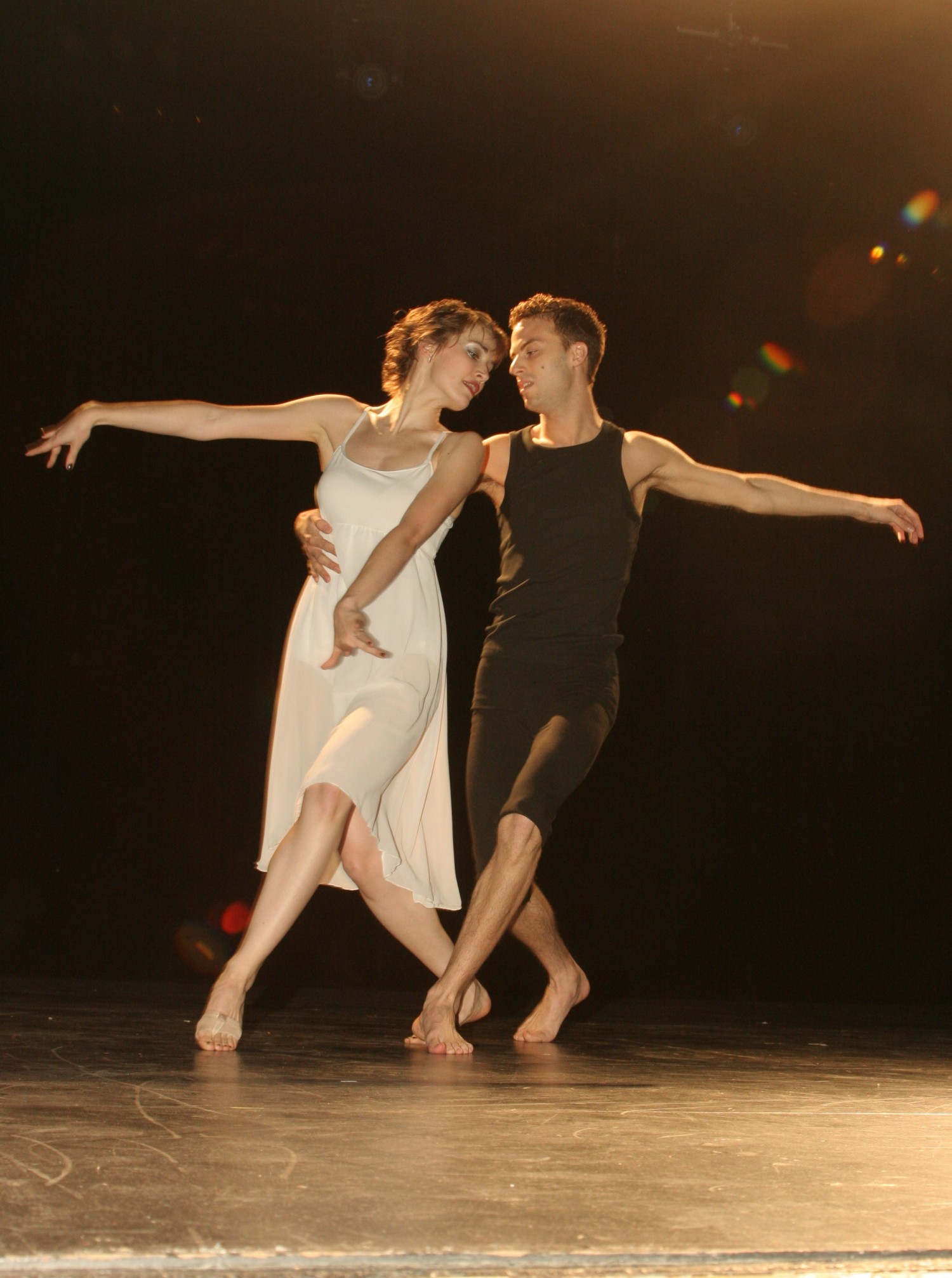Beginner Ballroom Balance

‘If you can walk, you can dance.’ True enough, but what is it about walking that means we can dance by doing it? More than anything, it’s about controlling momentum and coordinating our movements to stay upright. It’s about balance.
Of course, ballroom dancing is a bit more complicated than walking. By practicing the skills below however, you can eventually make dance look as easy as a walk in the park. Here we go!
Power from your legs
Dancing IS different from walking in one important way: when you walk, your body leans in the direction you are traveling (the faster you are moving, the more you lean), followed by your leg moving ahead to ‘catch’ your weight. In a way, you are constantly falling forward.
Ballroom dancing needs greater control than that, so instead practice powering your movement with your knees and ankles. Imagine you are on the beach, and you’re pushing sand away with every step. This causes the movement to travel up your legs to your hips, so you can stand tall and confidently.
Receive your momentum
An instructor I know says, “if you can’t stop yourself on one foot, you aren’t balanced, you’re ‘balancing’”. In other words, you aren’t really in control of where you are going.
That’s why the wise dancer practices walking and pausing on each step, making sure they can balance on each foot if they need to stop in a hurry – say, to avoid a collision. Now here’s the secret: if you roll onto your foot, it’s easier to stop.
What do I mean? Returning to the walking metaphor, we lead with the heel, and roll to a flat foot. This rolling action counters our forward momentum, so we don’t lose control. Just try walking on the balls of your feet if you don’t believe me.
In smooth/standard dances, we roll from heel-to-ball or toe-to-ball, when stepping forward or backward respectively. When we step to the side, we send out the inside edge of the ball, and roll to a flat. Practicing a box step in waltz is great for this, because it uses all four directions.
Rhythm/Latin dancing doesn’t travel as much, but the inside edge of the ball is still used on side steps. Dance a rumba basic for practice.
Floor connection = floor control
When you dance, you are aways in contact with 1) your partner, and 2) the floor. The floor can be your friend when it comes to building stability and control in movement, but only if you connect with it like you do with your partner – with pressure.
Pressure by the way, is not the same as weight. I can press a foot into the ground using my leg and ankle muscles, but I won’t lose my balance if I lift it up. Pressure happens through the moving leg, but weight is held over the standing leg.
Imagining yourself back on that beach from earlier, make every step like you’re trying to dig a furrow into the sand. You’ll find you have more control over your feet, and they won’t slide around as much. This gives you greater precision with every step.
We’ve made a good beginning towards giving you the balance and control you need to dance comfortably. Next week, it’s time to look at the skills the pros use to stay upright during even the toughest movements.
About the Author
Ian Crewe has been dancing ballroom for over 18 years, and has a Licentiate in American smooth and rhythm. His passion for dance eventually led him to blogging and the World Wide Web. Ian currently teaches at the Joy of Dance Centre, Toronto, ON, Canada.

